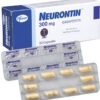Medication Overview
Chloroquine is an antimalarial medication primarily used to prevent and treat malaria. The drug belongs to the class of medications known as 4-aminoquinoline compounds. It is also indicated for the treatment of extraintestinal amebiasis, and occasionally used in the treatment of autoimmune disorders when other treatments are ineffective or contraindicated. It is vital to dispense only upon confirmed malaria diagnosis or for patients traveling to areas with chloroquine-sensitive malaria.
Mechanism of Action
Chloroquine exerts its antimalarial effects by interfering with the growth of Plasmodium parasites in the red blood cells. It specifically accumulates in the food vacuole of the parasite, inhibiting heme polymerase activity, which is crucial for detoxification of heme into hemozoin. This interruption leads to the buildup of toxic heme, effectively killing the parasitic cells. Additionally, its antiprotozoal and anti-inflammatory mechanisms provide further therapeutic applications.
Formulations and Dosages
Chloroquine is available in various formulations, including oral tablets and intramuscular injections, though the latter is rarely used due to the preference for oral administration. The standard dosing for malaria prophylaxis in adults is 500 mg every week, beginning two weeks prior to exposure and continuing for four weeks after leaving endemic areas. For acute treatment, the initial dose is typically followed by decreased doses at specified intervals. Dosages should be adjusted for pediatric use, elderly patients, and individuals with pre-existing health conditions.
Pharmacokinetics Profile
The absorption of chloroquine is rapid when administered orally, with peak plasma concentrations typically achieved within two to three hours. The drug has a large volume of distribution, extensively sequestered in body tissues like the liver and spleen, and exhibits a long half-life ranging from one to two months. Chloroquine undergoes hepatic metabolism into an active metabolite, desethylchloroquine. Excretion predominantly occurs via the kidneys, and renal impairment requires dose adjustment to prevent drug accumulation and toxicity.
Resistance Concerns
The emergence of chloroquine-resistant strains of Plasmodium falciparum has significantly affected its clinical use in malaria treatment. Resistance is primarily due to genetic mutations affecting drug transporters within the parasite, compromising drug efficacy. This resistance mandates regular monitoring and strategic adjustments in treatment protocols, particularly in regions with known high levels of drug resistance. Specific countries and regions have been identified where chloroquine resistance is widespread, and alternative therapies are recommended.
Drug Interactions
Chloroquine can interact with numerous medications, altering therapeutic outcomes. Concurrent use with arrhythmogenic drugs may increase the risk of cardiac arrhythmias. Antacids and kaolin-containing drugs may decrease the absorption of chloroquine when taken simultaneously, therefore a minimum four-hour interval between administrations is advised. Chloroquine may enhance the effects of certain anticoagulants, necessitating monitoring and potential dose adjustments. Cytochrome P450 enzyme inducers or inhibitors can also significantly impact chloroquine metabolism.
Adverse Effects Overview
The adverse effect profile of chloroquine includes gastrointestinal disturbances such as nausea, vomiting, and diarrhea. Visual disturbances, including blurred vision or retinopathy, may occur with prolonged high-dose use. Hearing loss, muscle weakness, and neuropsychiatric effects like confusion or psychosis are less common but clinically significant. Severe cutaneous reactions and acute toxic overdoses manifest primarily with cardiac symptoms and require immediate medical intervention. Monitoring and caution are advised, especially for long-term administration.
Special Population Considerations
Certain populations necessitate adjusted chloroquine use. In pregnant individuals, chloroquine can be used, but must be prescribed judiciously, considering the risk of fetal harm. Children require weight-based dosing to avoid toxicity. Due to prolonged elimination, elderly patients are more susceptible to drug accumulation, warranting careful dose regulation. Patients with hepatic or renal impairment must be closely monitored, with adjustments in dosage to prevent potential toxicity. Emergency contraception may be less effective when used alongside chloroquine.
Clinical Monitoring Requirements
Regular ophthalmologic examinations are recommended during long-term use to detect early signs of reversible retinopathy. Auditory testing may be advised to assess potential damage to the cochlea. Blood cell counts are essential to monitor for potential hematologic toxicity. Electrocardiograms (ECGs) are recommended in at-risk patients to detect early cardiac anomalies. Regular hepatic and renal function tests are advised due to chloroquine’s metabolism and excretion pathways, ensuring prompt identification of functional impairments.
Patient Counselling Points
Patients should be informed about the importance of adhering to prescribed dose schedules, especially for preventing malaria. Education on recognizing early signs of toxicity or adverse reactions, such as visual disturbances or skin rashes, is crucial. Encourage patients to report new symptoms or changes in pre-existing conditions promptly. Travel advice, including additional protection measures against malaria, should include avoiding mosquito bites. Patients should be advised to avoid self-medication and seek medical guidance before combining chloroquine with other therapies or herbal supplements.








Reviews
There are no reviews yet.